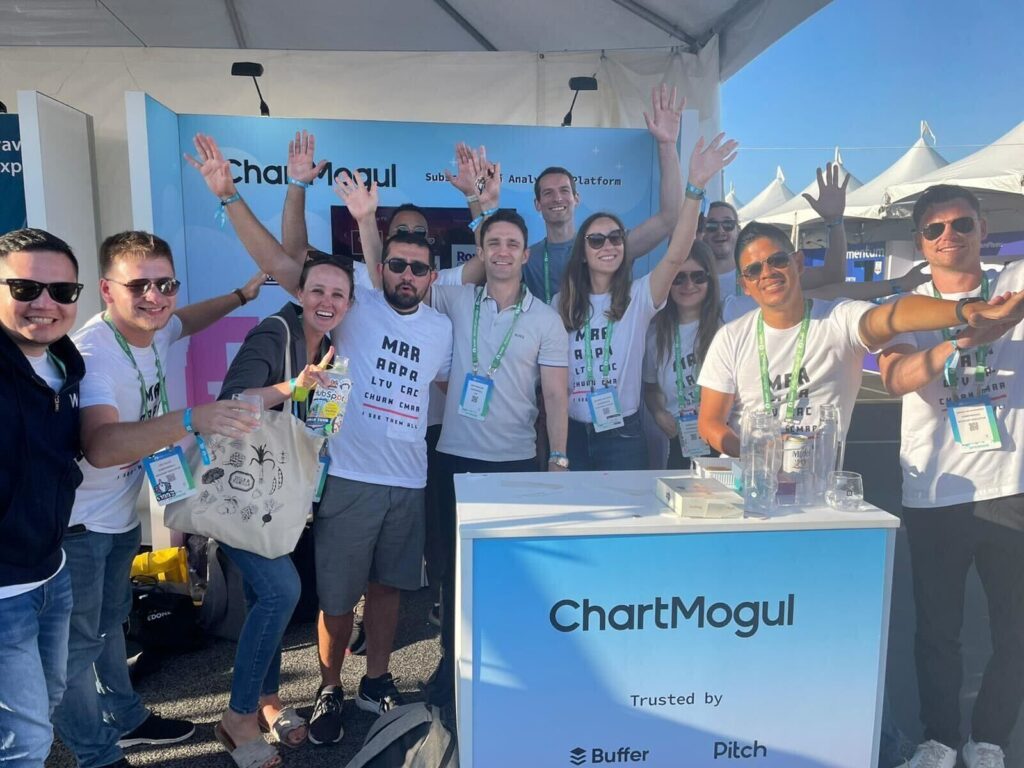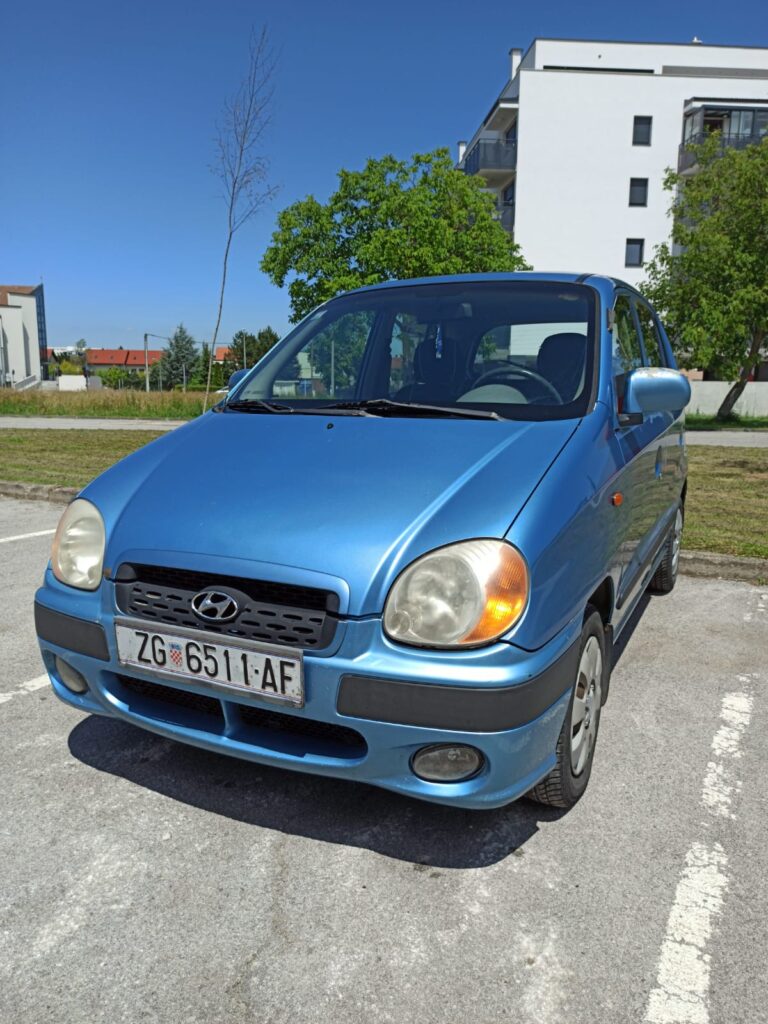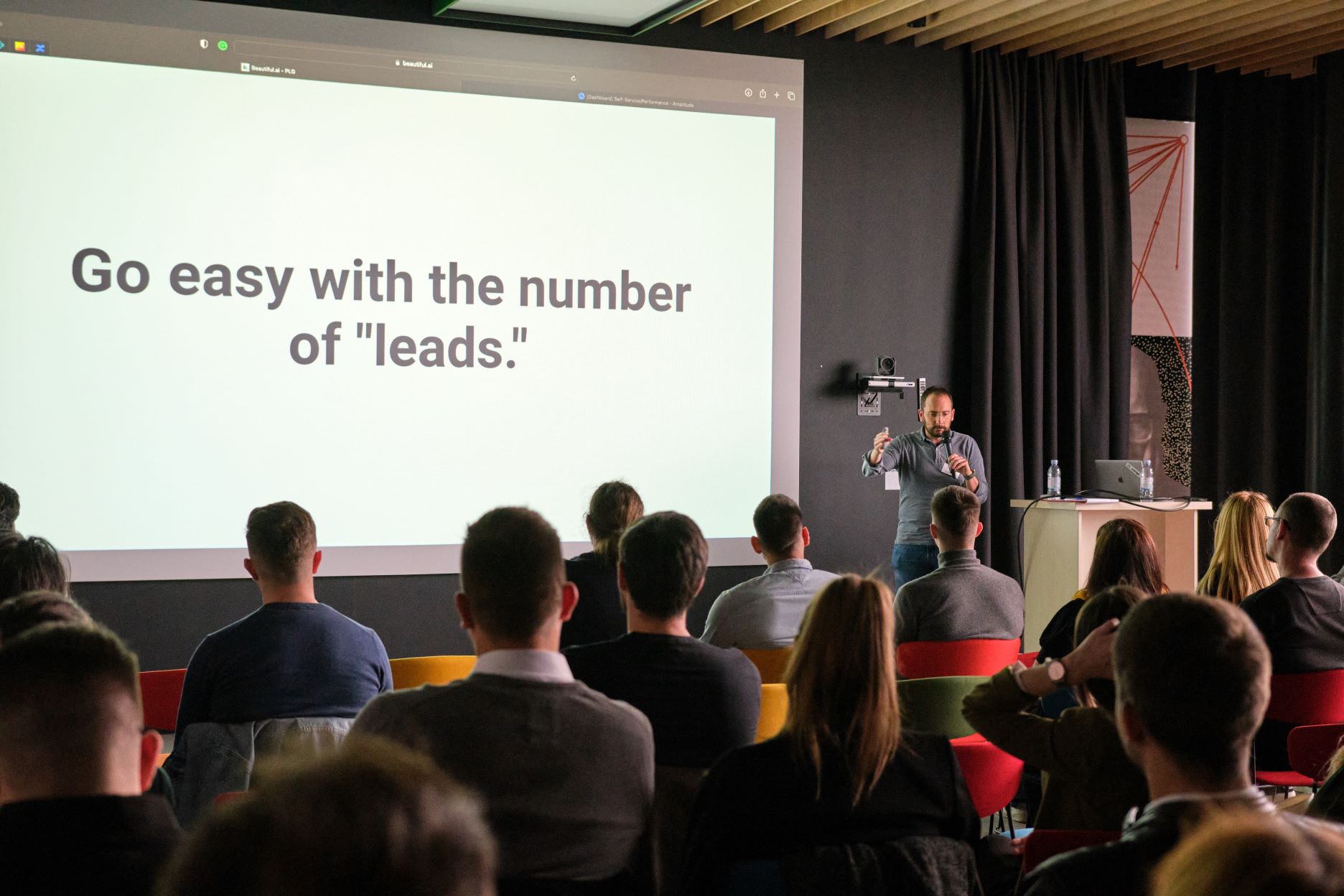A typical web dev agency doesn’t need a big sales investment or a super structured process. Types of sellers in agencies are social butterflies, an outgoing bunch that thrive in relationship building and long sales cycles. A ‘PLG-esque’ SaaS needs something a bit different.
As we switch from a heavy agency-focused tech ecosystem to a product one, we’re going to need more auxiliary roles (Sales, Marketing & CS) than we can currently provide here in the Balkans. More often than not, founders approach me asking for recommendations for AEs and SDRs and my answer is the same;
“The good ones won’t work for you, the rest you’re not willing to invest in.”
So let’s think about why that is & what we can do about it.
The A-Team players
The first time I flew to SaaStr in San Mateo I was stunned by how well-thought-out and disciplined the Sales/Marketing strategies at the conference were.
Most events I did in my sales career were a wreck. I was sent to all kinds of places with no clear goal in mind other than to stand by my booth all day and make eye contact with the attendees. First time doing SaaStr I felt like it finally made sense.
At ChartMogul, we had a lead goal target, an activation strategy, collateral & merch to hand out, a partnership strategy, and a side event plan. We flew a team of 8 to the sunny side of the world with the intention to make it worth it for us.

I quickly realized that most of the sellers at the conference were well prepared. The talking track, the activation strategy, and even the jokes & giggles were part of the plan. Everyone aspired to entertain, educate, and be the best person to talk to. Sellers were top of their game and the whole atmosphere was super compelling.
Now compare that to the woes and troubles with sales in Croatia, Serbia, Slovenia & CEE in general. The vibes are off, sellers are underpaid, overworked, and produce less output on average.
K.I.S.S. – Keep it Simple, Stupid
Some years back I tried selling my old car at the flea market in Zagreb more commonly known as “Hrelić”. It was a Hyundai I was willing to give up for less than a nickel as I really had no use of the car and just wanted to get rid of it.

My thought process was; ok I’ll look at the crowd, find a dad & a college kid, and just chat them up with a good story about the car (I was a student as well), sell it fast, eat some ćevapi and head home. To my surprise, it was difficult to engage – I’ve done conference sales a million times but people despised me coming up to them so my car got absolutely ignored.
Right across the street there was an older seller with the most hideous 2000’s WV Passat you could imagine. Not being deterred by his poorly looking vehicle, the seller was smart – he stood by the car repeatedly shouting: “Novi filteri, nove gume” (New filters, new tires). I was shocked to see all the crowd coming up to him bidding for the car. He sold the car in no time and I went home unsuccessful.
What he understood and I didn’t is that a cheap car needs to have two features: It should drive and it shouldn’t cost much. So naturally, a car you don’t need to invest in (recently serviced with new tires) fits the bill better than a heartfelt story about my Hyundai.
This is exactly how I see some SaaS businesses from Zagreb fail to sell their vision. Instead of keeping it simple, they try to emulate bigger vendors and it falls on deaf ears. If your product is cheaper than the rest & if it cuts into a specific market segment of your Silicon Valley competitor, why pretend? You’re not going to make it to the top 3 vendors in the evaluation by having a foosball table in your office or an army of poorly trained SDRs randomly dialing contact lists you bought.
What is going to move the needle is having a strategy & a niche you’re going for. It’s much simpler to train a seller on one use case & one ICP (Ideal customer profile) rather than having the sellers “manage it by themselves” set by unachievable quota, confusing value prop, and no clear path to success.
It’s about the incentives & outcomes
Setting the right goals & comp is not that difficult but in our corner of the world, there is an inherent mistrust and bias towards sales. It’s a cultural thing but we also seem to aspire to the wrong role models, needlessly making the sales job more difficult by focusing on the “hustle” aspect instead of repeatability.
I’ve recently had a chance to chat with a founder in Zagreb who’s in disbelief at how salespeople reject the notion of OTE (On Target Earnings) and rely on their base pay.
“They look at the base pay and say “that’s too low” and when I point out it’s 60% of their total comp, they don’t believe they can actually sell to earn the rest.”
Sellers adjust their attitude towards outcomes. They set up pointless meetings just to prove “activity” and then blame the product or onboarding for low conversion if needed. The founder is happy because “something’s happening” & the seller moves on with base pay not even thinking about getting the variable.
It needs to stop, and here are some suggestions on how to fix it:
- Insist on OTE fixed/variable split. You can introduce clawbacks (reducing quota achievement if customer churns in some period) and change stuff around if needed but insist on an MRR/ARR goal, minimum threshold, and give out % of their variable pay based on achievement.
- Your compensation calculus needs to be simple. If a seller doesn’t understand how they earn a variable, then it makes no sense to give it out – just pay the base salary then. The variable portion of sellers’ salary is not a ‘bonus’ – it’s part of their pay & it actually makes a difference if a seller has a clear path to it.
- Set comp plans on time. I am hearing complaints from sellers over and over again about their comp plans changing mid-quarter or being set 2-4 weeks after the quarter started. A smart seller will front-run her quota by getting leads in early. She will dial up the intensity from the get go in order to have an easier time later in the quarter and you’ll sleep better knowing a quarter end will not be a nail-biter.
- Once you’ve set the quota, don’t change it mid-period. If you’re afraid you’ll be over or underestimating your sellers, set shorter quotas (monthly, quarterly or 6 mo).
- You can convince the seller to join more easily and improve their odds in the long run if you pay full compensation on ramp. Ramp is the time when a seller is learning the product and the job – in most roles, it’s 3 months and the seller should be compensated their full salary while learning. It’s what makes them confident that earning full OTE is possible & gives them a taste of how it can look like.
Also, you really want to have your sellers invest time learning the product. It’s true that good sellers can sell anything but best sellers sell your product the best.
- A seller that spends time with Customer Success, reads customer feedback, has a good relationship with the Product team, and is a true team player is someone you can trust.
- For the love of God, send sellers to the events. I find it extremely weird that founders like to attend & man the booths themselves. Your time is best spent with customers & closed groups. Go for a lunch and forget about the booth – trust your sellers will do the job.

- Give junior & “non-SaaS” folks a chance. We have a small ecosystem and there is plenty of talent sitting on the sidelines because they are not “SaaS”. Once you have your GTM working, your Head of Sales should be actively recruiting. That includes spending time with junior & “non-SaaS” folks and training them.
- Process beats hustle. We all love hungry sellers but 9 out of 10 times a disciplined sales team beats the enthusiastic one because they stay the course, don’t burn out on the first sign of trouble, and make predictable progress
- Salespeople don’t leave jobs, they leave their managers so be absolutely sure your managers are the right people for the job. A good manager can make a bad sales rep perform, a bad one can make a superstar burn out.
The Way Out
The way out of this founder-seller conundrum is by being disciplined about your hiring & goals. You can always get better salespeople but you need to hire abroad and pay a premium. If you can’t do that – you better invest in the people you’ve got. And I hope you do, because we have some really talented people here ready to be taught & respected by their managers.
And if you’re having doubts about how to do this right, remember everyone kinda tumbles into it. If you ask any seller how they ended up in sales, they will all tell you it was not their original intention to do so. It’s same with Go-To-Market, you need to test stuff out to see what works. But don’t break your sellers’ back doing it.
If you liked this and want to learn more – join us at SaaStanak 2024. We’ll have founders & operators sharing their GTM journeys and it’s a good opportunity for you to think these topics through with people who’ve already done it. Check out our speaker roster and grab your ticket while the early bird sale’s on!
